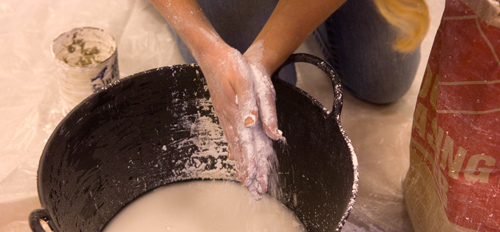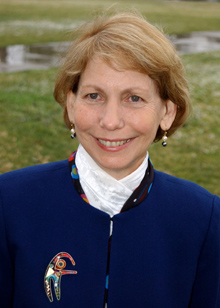Spring 2008: The Creative Campus

Kay Hinton
Creativity Taking Shape
By Rosemary M. Magee 82PhD and Leslie Taylor

Rosemary Magee 82PhD
Jon Rou
Imagine a place of color, movement, and sound, where dancers and actors rove, where musicians improvise, where artists create and cultures collide; a place alive with energy, creativity, and unscripted conversations. And for dreamers, a place where pragmatic impossibilities converge with innovative thought.
Are you imagining a place like Greenwich Village? Union Square? Little Five Points perhaps? Try Emory University at the annual Student Arts Festival, for example, where unfettered energy and expression remind us, once again, how creative our campus can be.
We’ve known for some time that Emory is a place worthy of its world-class reputation. A campus where teaching and research, where faculty and students, where liberal arts and professional training, where health sciences and the humanities, intertwine in real and meaningful ways.
And now we’re coming to realize that Emory University is also a place where creativity flows and the arts flourish. A place where these entities are both recognized and supported for their intrinsic value as well as for the contributions they make to all parts of the University. We say “coming to realize” because we’re still connecting the dots for a fuller picture of our assets, accomplishments, and aspirations.
During the past five years, several of Emory’s leading stories have been grounded in the culture and concepts that we define as creativity and the arts.
The innovation behind the Emtriva drug discovery, the imagination at the heart of the medical school’s new curriculum, the originality in Natasha Trethewey’s Pulitzer Prize–winning poetry, the bold vision to bring Salman Rushdie and the Dalai Lama into our learning community, the uncommon successes associated with the Ramesses I exhibit, the Danowski collection, the Candler Concert series, and the Ellmann lectures—all of which form a brilliant constellation of creative outbursts.
And that’s not all. This spring our campus hosted a major poetry conference, “A Fine Excess,” sponsored by the National Endowment for the Arts, featuring Richard Wilbur and other notable poets. Alice Walker and Dorothy Allison both gave their engaged presence and voices to this campus. In the coming months, the Emory community will have access to a one-of-a-kind database from a groundbreaking study on the links between psychoanalysis and the creative process. Next fall the Ellmann lectures will bring Umberto Eco, another major international literary figure, to campus for a series of thought-provoking dialogues.
Beyond making national headlines, every day of the semester in classrooms and laboratories across campus, Emory is also igniting individual minds. Julia Kjelgaard, an artist and printmaker, spent six months in Bangalore, India, as a Fulbright research scholar. Her resulting book, featuring work from her 2006 “Transformative Experience” series, informs her teaching of Emory undergraduates. And we have challenges from people like Michael Kuhar, Candler Professor and chief of the Neuroscience Division at Yerkes, who recently asked the Emory community to reflect on how we “accept, respect, and even nurture” creative minds within our midst.
In order for creativity and the arts to be fully a part of who we are and what we hope to become, we must recognize the nonlinear, unpredictable ways in which these entities emerge. Here our students can serve as guides. When students come to Emory, they are seeking a rigorous education that will prepare them not only for a full professional life, but also for a continued life of the mind and the heart. Many have training in the arts and have participated in innovative science programs in their high schools. They expect and anticipate a dynamic, challenging environment that requires imagination and knowledge to work in tandem. In this way, they embrace Einstein’s theory: “Logic will get you from A to B. Imagination will take you everywhere.”
Last spring Rushdie reminded us that “we are all dreaming creatures. To dream is also to create.” Our students are dreaming creatures in large part because our community has created a place for their ideas and expressions to take flight.
There was a time, in the not-too-distant past, when creativity and the arts were undernourished on our campus. Now—while there is still need for further strengthening and growth—the prognosis is positive, and the energy, contagious.